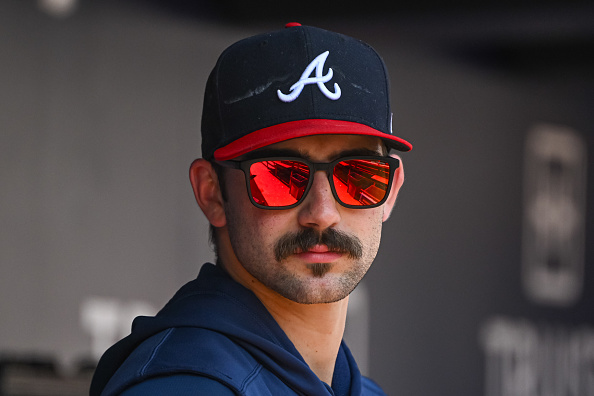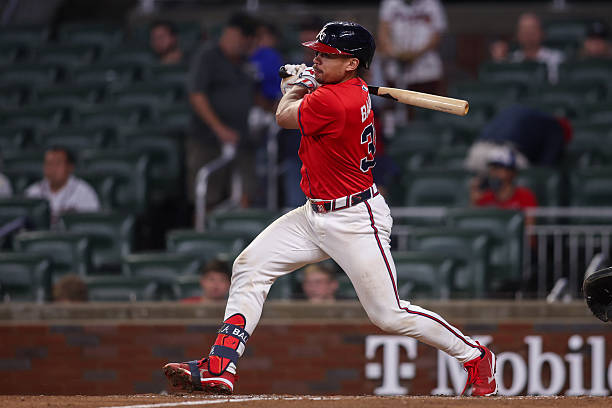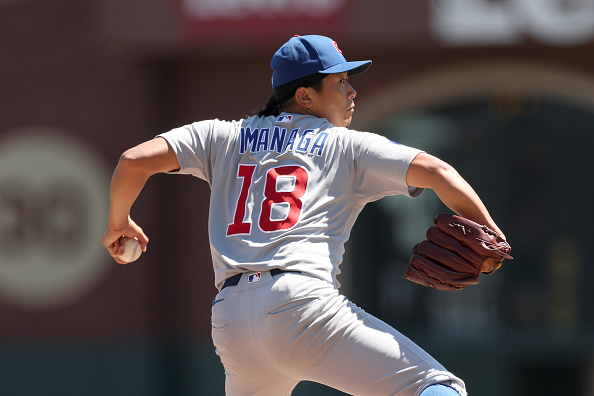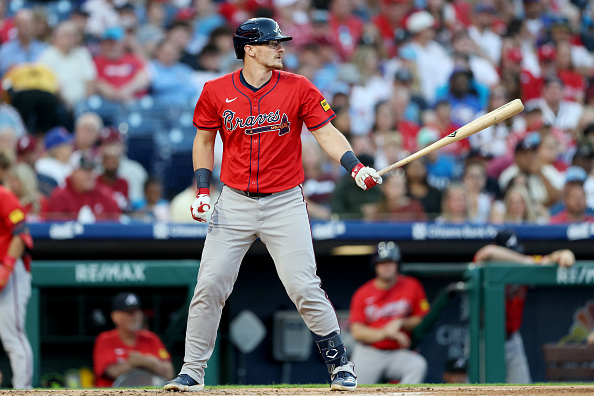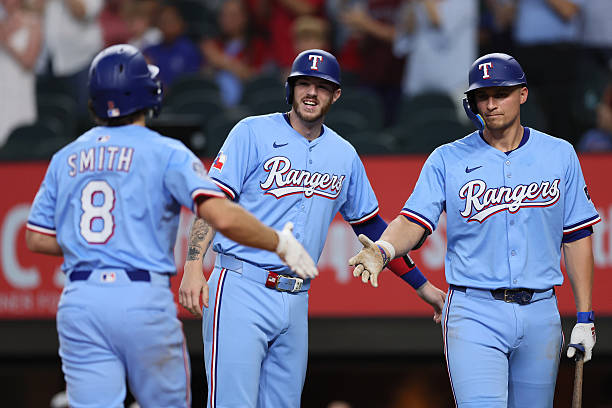Spencer Strider is an intimidating pitcher to face in baseball and is once again putting up record numbers in the strikeout department. Some may even consider Spencer Strider to be a strikeout machine. However, looking deeper into Strider’s pitching shows some promising and unfortunate trends. So far, the Atlanta Braves starting pitcher’s season is a toss-up between expected and unexpected; no one has a balancing point if the flamethrower is playing up to his standards. Coming from Clemson University, Spencer Strider was selected in Round Four of the 2020 June Amateur Draft. Strider quickly made his MLB debut with a relief cameo appearance for one inning against the New York Mets in October 2021. Strider first started for the Braves in May 2022, posting seven strikeouts, two walks, and three earned runs. The 24-year-old has started every game since and is a Braves rotation staple featuring Max Fried, Kyle Wright, Charlie Morton, and himself. This season is a change compared to Strider’s 2022 breakout year, where he finished second in ROTY voting behind teammate Michael Harris II. Here is a look at the good, the bad, and the middle this year for Spencer Strider (so far):
The Good
Spencer Strider’s Pitch Catalog
First, with every Strider look is his strikeout numbers. A number that takes the league by storm is Strider’s ability to overwhelm batters with high-end velocity and he only uses a three-pitch selection; all of Strider’s pitches are hard to predict with speed. Strider’s favorite pitch, his fastball, has dominated batters at the beginning of the lineup. With an above-league-average drop of 10.5 inches, Strider’s fastball velocity sits around 97.2 mph, dropping 2.6 inches better than the average. With a usage rate of only 58.7%, more breaking pitches like his slider make his pitching less predictable. According to pitch values, the slider has benefited him the most this season, with 12.9 runs above average. His breaking pitches have produced an xBA around the low to mid .100s. His slider has an xBA of .118, while his changeup has an xBA of .160. The changeup has improved since its debut in 2022.
Strong Innings
Strider tends to do very well in the first inning, with the best batters seeing his pitches for the first time, he posts a 1.88 ERA, and opponents are batting .174 against him early on. With the Braves hot first-inning record this season, this trend has determined Strider to be a strong starter. In the first inning, Strider has held his opponents to a .174 AVG, .237 OBP, and only one home run given up in 24 innings. Strider’s average in the first inning is his second lowest out of all his innings, and his ability to either keep the score locked at zero or already have a lead is a high probability. The fourth, fifth, and sixth inning is also solid, accumulating batting averages of .207, .200, and .161, averaging a .189 AVG and an OBP of .245. Strider’s lowest BABIP and OPS are in the middle innings. If he can work the first three innings, he gets to his sweet spot in the following three.
Strong Competition, Strong Play
One of the most qualified and important metrics for a pitcher is his ability to pitch against good teams. Strider’s proven that his play against good teams is better than his average. When playing teams that are .500 or better, Strider deals. First, Strider owns a .196 BA, .250 OBP, and .334 SLG. That’s an improvement from his averages in 2023 in all three categories. In 14 games played, Strider holds an ERA of 2.72 in 86 IP and a WHIP of 0.954. His SO/9 also reaches an outstanding 14.7! This is a solid sign for when the Braves take on a team in the playoffs.
Sean Murphy
Yes, Strider’s strength is Sean Murphy. The statistical analysis shows that he prefers Murphy is behind the plate. Unfortunately, veteran catcher Travis d’Arnaud is not the better suit for Strider. In Strider’s 24 starts, Murphy owns 15 starts, and d’Arnaud owns nine. Murphy holds better statistics in ERA, BA, OBP, SLG, and almost every metric in baseball. Murphy has played 85 games to d’Arnaud’s 51, which shows that Murphy is the number one option for the Braves.
The Strikeout Machine Comes Alive With Two Strikes
Strider’s punch-out ability has elevated him to be one of the game’s most watchable and exciting pitchers. His high strikeout rate is always dazzling, but his put-out rate is excellent. With two strikes, Strider makes the ball seem like a ping-pong-sized ball according to metrics. Strider holds his batters to a .125 AVG and a .204 OBP with two strikes. When you put yourself in a hole in the box against Strider, it feels like a crater. Not only the high strikeout rate but trying to play catchup with a pitcher who is a strike machine is difficult.
The Bad
Spencer Strider’s Pitch Catalog Redux
Looking at the weakness of Strider, his predictability is his worst enemy. With his fastball being his favorite pitch since his debut, hitters have caught on quickly. Although advanced statistics show his pitching is excellent, his barrel percentage is 28%, near the bottom four in the league. The fastball has his lowest xBA, and his fastball usage rate is his highest (58.7%). His fastball lost one mile of velocity, which has hurt his dominance with the high heat. His fastball BA, SLG, and PutAway% have all decreased. Strider only throws his change up 7.2% this year, making himself a two-pitch player with around 92.8% of pitches.
Weak Innings
With all of Strider’s strong innings, his weak innings stand out. Once Strider gets out of the first inning, his second and third innings are weak. In the second inning, Strider’s BA rises to .211, slugging to .421. Strider’s ERA jumps to 4.21 in the second inning. Strider’s third inning is even weaker than the second. His BA jumps to .253, SLG to .390, and ERA to 5.84 in the third. Strider’s third inning is horrible, where he’s leading in walks, stolen bases, hits, and giving up free bases. In addition, Strider has the least strikeouts in the third inning while having the most plate appearances. Finally, although only having 6 2/3 IP, Strider’s seventh inning is his worst. Owning an 8.10 ERA, Strider has 30 ABs in the seventh and has given up three home runs.
Plays to His Competition
Embed from Getty Images
When the Braves strikeout machine plays against weaker competition, he plays to the competition’s level. When facing teams under .500, Strider has played much worse. Owning a 5.40 ERA, Strider’s WHIP increases to 1.388, his SO/9 decreases to 13.0, and his OBP increases to a .336. His BABIP also rises to .350 compared to .298 against teams above .500. In the playoffs, Strider will not face a team below .500. However, Strider should deal with worse teams much better. Some Strider slip-ups were his start versus the Pittsburgh Pirates, when he gave up five hits, three walks, and six earned runs, as he only went two and two-thirds of an inning. Versus the Chicago White Sox, Strider had ten strikeouts, eight hits, and gave up five earned runs in six innings. His worst earned runs performance this year was versus the New York Mets. Strider threw four innings, gave up eight hits, and eight earned runs. Strider’s performances against below .500 teams seemingly make him a shell of himself.
High Leverage
High leverage situations are pivotal in determining teams’ winning and losing. Baseball-Reference defines these leverage situations as such, “Situations where dramatic swings in win probability are possible (e.g., runner on second late in a tie game) have higher LIs than situations where there can be no large change in win probability (e.g., late innings of a 12-run blowout).” Unfortunately, when Strider is in these “High Leverage” situations, he performs worse than low leverage situations. Strider owns a .156 BA, .229 OBP, and .317 SLG in 202 plate appearances in low leverage situations. When in a high leverage situation, the splits are apparent. With a .265 BA, .330 OBP, and .431 SLG in 112 plate appearances, Strider’s performance in high leverage situations is his worst.
The Verdict
With all his potential and current make up, Spencer Strider is one of the better pitches in baseball. However, his push to become a Cy Young candidate needs more time. One area that could make Spencer Strider a great pitcher is adding another pitch to his repertoire. With the three-pitch selection, Strider heavily leans on a fastball, slider combination, and low-use changeup. If Strider adds a curveball and uses it decently well, his fastball may become more effective and unpredictable. This could be an effective strategy on the bump for Strider. With his issues this year, another pitch and more off-speed pitches could help change the batter’s eye levels, speed, and pitch prediction. Strider is coming off an impressive start against the San Francisco Giants and looks to keep his season on a more stable path toward the playoffs.
More Atlanta Braves Articles
More MLB Articles
Main Photo:
Embed from Getty Images
- Category
-
Atlanta Braves

